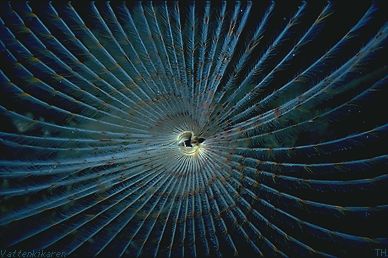 |
 |
 |
Dead men´s finger catches and eats suspended material. Suspension feeders have to be well anchored, but many places may not be suitable. Those factors that effect a possible site are the quality and abundance of food, concentration of uneatable mud, how powerful water movements are and interaction with other specie in the area. All factors that effect growth and survival also effect the ability to reproduce successfully. What makes a site suitable for colonization varies between the different specie because they collect suspended food in different ways, and the way they handle varying disturbances such as waves and predators also varies between the specie. 
| Cliffs and rocks are fantastic! | ||||
| Zoning and flecked occurrence | ||||||
| Animals that are attached | ||||||
| Modular construction | ||||||
| Variation and change | ||||||
| Variations in water level | ||||||
| Wave exposure | ||||||
| Both cliffs and rocks | ||||||
| Freshwater and saltwater | ||||||
| Geography, climate and history | ||||||
| Organisms life cycles | ||||||
| Organisms effect on each other | ||||||
| Energy and the flow of material | ||||||